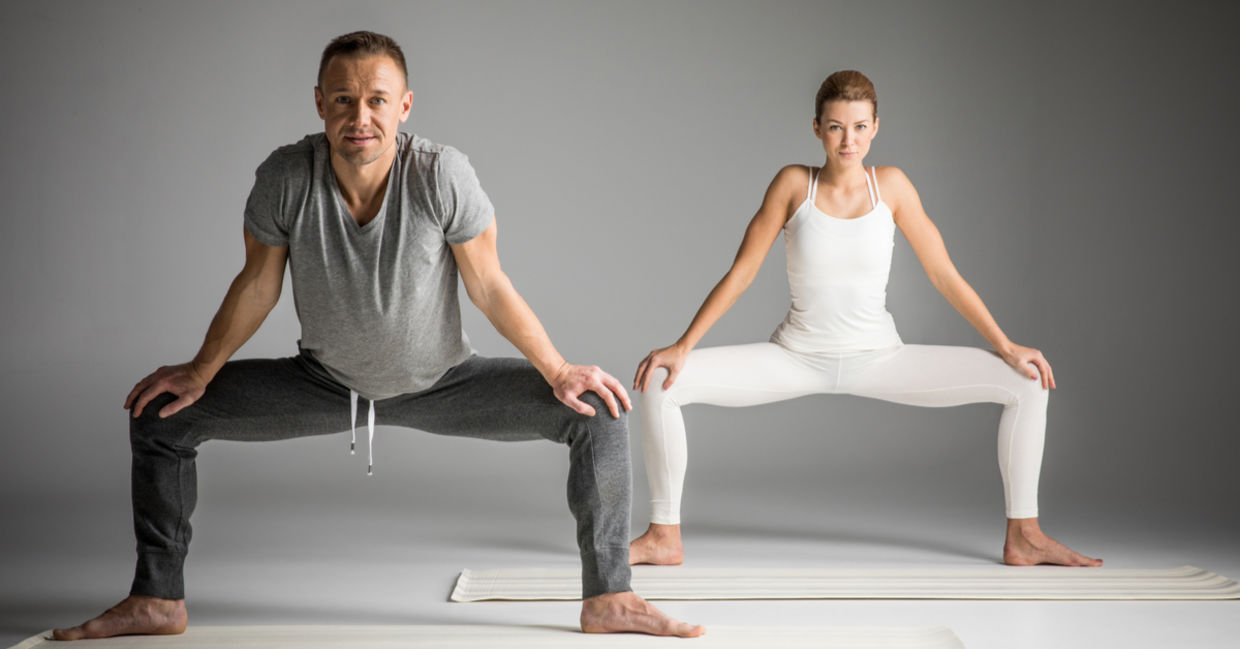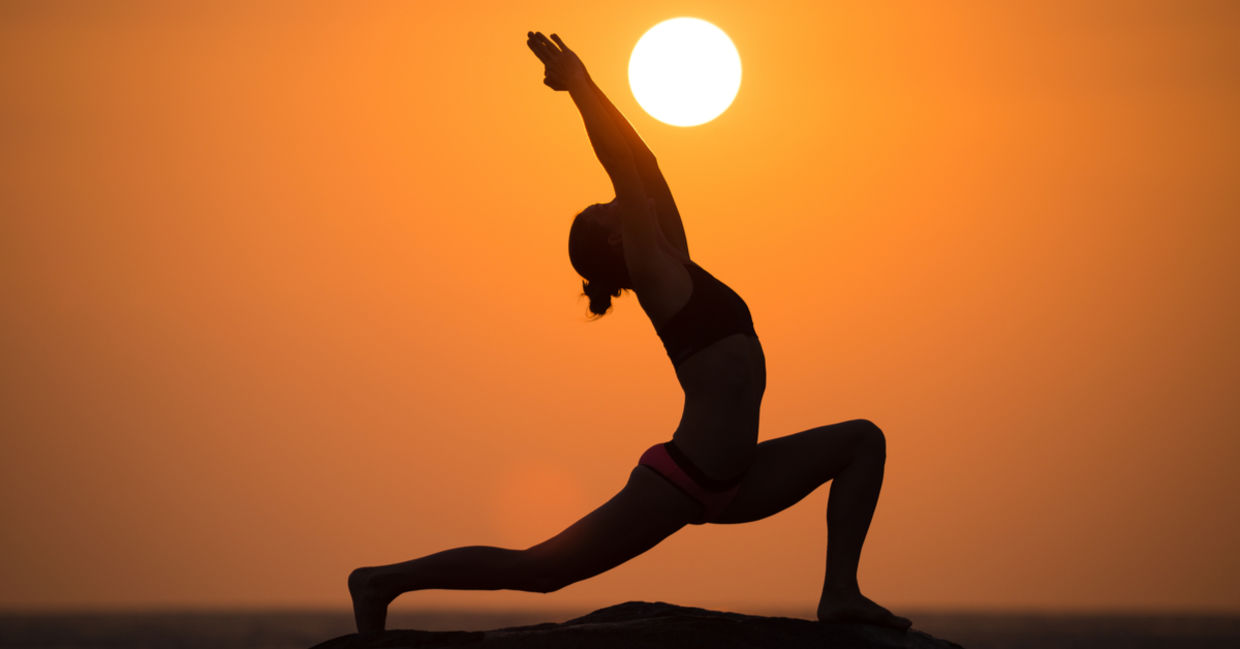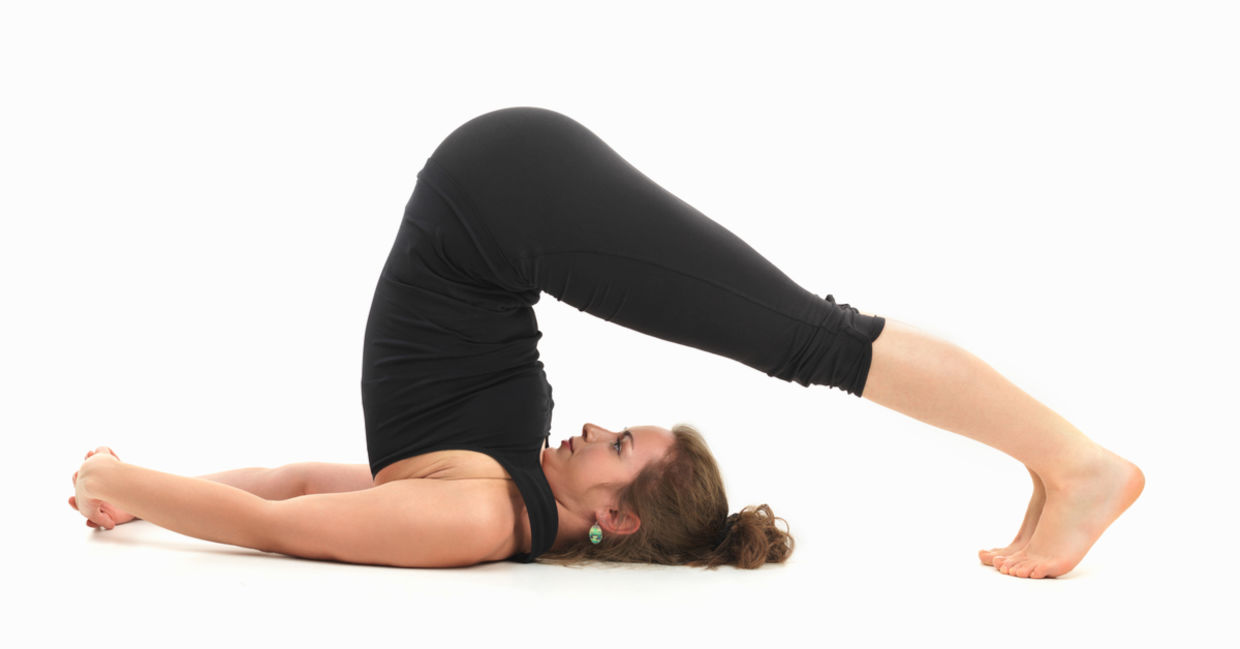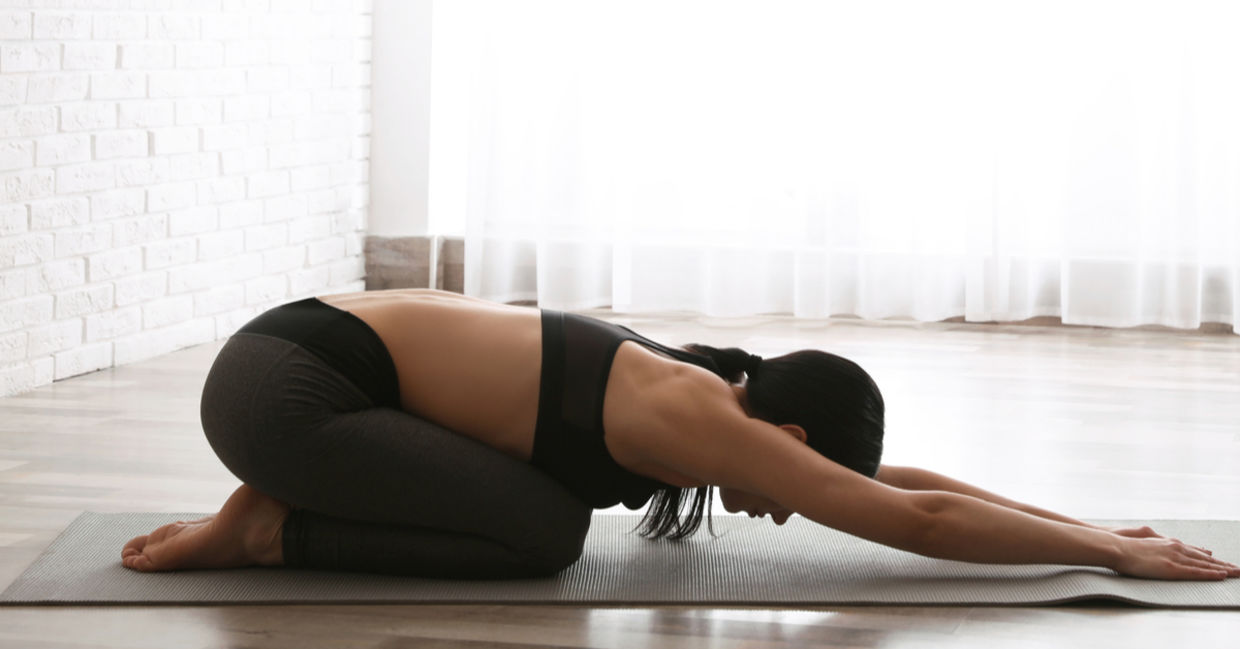
(Prostock-studio / Shutterstock.com)
The spiritual and physical come together in the chakras. Meaning wheel in Sanskrit, the chakras are swirling energy centers in the body, which begin at the base of the spine and run upwards through the crown of the head.
When in balance, the energetic channels flow freely, and you feel at ease in your thoughts, actions, and relationships. When one of these seven chakras become blocked, we suffer from a host of physical, emotional, and psychological ills. Tension builds in the body and negative thought patterns may develop.
Physical postures and meditation practices, like those used in yoga, can help release stored tension in the body and balance the chakras. You can restore the natural flow of your seven chakras with these yoga poses to bring harmony to the mind, body, and soul.
1. Root chakra (Muladhara chakra)
The root chakra, located at the base of the spine, corresponds to fundamental needs like shelter, safety, food, family, and finances. When in balance, we feel grounded and secure with roots firmly planted. When out of balance, we lack a solid foundation and feel stressed about those essential needs like making ends meet or feeling emotionally supported.
If you feel insecure in your foundational needs, incorporate malasana (yoga squat) into your daily practice. Separate thighs and squat down. Place hands in prayer or use them to support you on the mat. Hold the pose and focus on the affirmation: “I am grounded and safe.”

(dkovalenko / Shutterstock.com)
2. Sacral chakra (Svadhisthana chakra)
The sacral chakra sits at the lower abdomen below the tailbone. This orange frequency chakra relates to expressing emotions and desires freely. When aligned, we flow with the rhythms of life. We feel playful and open in creative and sensual expression. When out of balance, we feel and emotionally unstable.
Restore creative expression, emotional stability, and physical pleasure by holding utkata konasana (goddess squat): Stand with your feet wider than your hips, toes turned out slightly. Then drop your hips low by bending the knees, and bring palms to heart center. Repeat the affirmation: “I flow with inspiration and creativity.”

(LightField Studios / Shutterstock.com)
3. Solar plexus chakra (Manipura chakra)
The solar plexus chakra sits in the abdomen above the belly button. This yellow frequency chakra channels our sense of self. This is our commanding energy. When aligned, we feel powerful, resilient, and full of purpose. When out of balance, we seek external validation for self-worth and lack self-confidence.
Restore balance to the solar plexus by incorporating the warrior series into your daily practice. Step one foot toward the back of your mat to come into warrior I. On the inhale, bring your arms up over your head. Repeat the affirmation: “I stand in my personal power.”

(dmitry_islentev / Shutterstock.com)
4. Heart chakra (Anahata chakra)
In the center of the chest is the heart chakra. Here, this green frequency chakra allows us to give and receive love openly. But when out of balance, we feel unworthy of love and closed off.
To open your heart, hold purvottanasana (reverse plank pose). Begin seated on your mat with legs extended. Bring your palms to your hips, fingertips pointed forward. Press into your hands, palms down, as you lift your hips and chest toward the sky. Repeat the affirmation: “I courageously give and receive love.”

(Milan Ilic Photographer / Shutterstock.com)
Throat chakra (Vishuddha chakra)
The throat chakra is a blue colored frequency that relates to our ability to communicate. When in balance, we express ourselves honestly. When blocked, we struggle with miscommunication and feel anxious during conversations.
Restore the ability to listen to and express yourself honestly with halasana (plow pose). Lay down on your back. Keep arms by your side, palms down as you raise your heels and place them on the floor behind your head. Repeat the affirmation (aloud or mentally), “I am balanced in speaking and listening.”

(Comaniciu Dan / Shutterstock.com)
6. Third-eye chakra (Ajna chakra)
Moving onto the third-eye, the indigo chakra between the eyes relates to intuition and how we connect to the external world through our internal dialogue. When aligned, we trust our intuition, release our ego, and develop strong inner wisdom. When out of balance, we become cynical and too attached to external circumstances.
Bow in balasana (child’s pose) to restore harmony to the third eye. Sit on your heels with knees wide apart. Bow forward, draping your torso between your thighs, and allow the forehead to come to the floor. Extend arms forward, palms facing down. Repeat the affirmation: “I follow the path of truth and intuition.”

(New Africa / Shutterstock.com)
7. Crown chakra (Sahasrara chakra)
At the top of the head, the crown chakra opens to the divine. Through this violet frequency chakra, we channel our higher essence and spiritual realm. When in balance, we transcend the physical world for a divine experience and feel a deep spiritual connection. When blocked, our happiness depends heavily on external conditions.
Connect with your deepest self in sasangasana (rabbit pose). Sit on your heals before bowing forward. Bring the crown of your head toward the floor. Cup your heels with your hands by reaching back with your arms. Then engage your abdomen and lift your lower back and hips away from the floor. Repeat the affirmations (aloud or to yourself): “I feel connected to my higher self” or “I am an extension of the universe.”

(OlgaLitvinovaFoto / Shutterstock.com)







